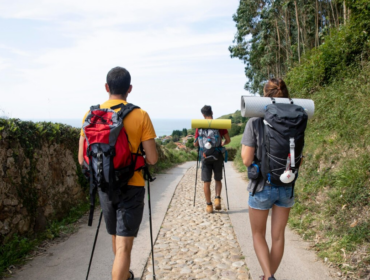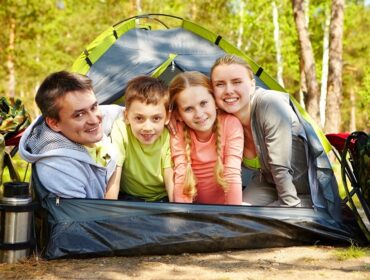Introduction: The Call of the Open Road
Overlanding is not just a trip; it’s a lifestyle. It’s about the freedom to drive beyond paved roads, set up camp under the stars, and rely on your own preparation and gear. For first-time explorers, the excitement of overlanding often comes with the big question: What gear do I actually need? Pack too little, and you risk discomfort or safety issues. Pack too much, and you’ll be bogged down with items you never use. The goal is balance: carry what you need for safety, comfort, and self-reliance, while leaving room for spontaneity and adventure.
This checklist highlights the essential gear for first-time overlanders. It’s built not just around function, but around the experiences that gear enables – the moments you’ll remember long after the dust settles.
1. Navigation & Communication: Finding Your Way When Roads Fade
The heart of overlanding is venturing into remote places where cell signals vanish. That’s why navigation and communication tools aren’t optional – they’re your lifeline.
- GPS Device or Offline Maps: A rugged GPS unit like the Garmin Montana can track your routes and mark key waypoints. Always download offline maps before heading out.
- Compass & Paper Maps: Old-school backups ensure you’re never stranded if your electronics fail.
- Satellite Communicator: A device like the Garmin inReach Mini 2 keeps you connected with SOS and messaging capabilities, even in the backcountry.
- Two-Way Radios: Reliable for convoy communication when traveling with friends.
With these tools, you’ll feel the thrill of going off-grid while staying safe.
2. Shelter & Sleeping: Resting Easy in the Wild
After a long day on dusty trails, your camp is your sanctuary. A well-chosen shelter and sleeping setup transforms a rugged landscape into a place of rest.
- Roof-Top Tent or Ground Tent: A roof-top tent like the Kelty Sideroads offers comfort, quick setup, and safety above ground. Ground tents like the NEMO Aurora is excellent lightweight alternatives.
- Sleeping Bag: Choose a bag rated for the season. The NEMO Tempo is versatile for most conditions.
- Sleeping Pad or Inflatable Mattress: A sleeping pad adds insulation and comfort so you wake up refreshed.
- Awning or Tarp: Creates shade and shelter, turning camp into a true living space.
Here’s the secret: well-rested explorers travel farther, think clearer, and savor the adventure more deeply.
3. Cooking & Food Storage: Meals That Fuel the Journey
Food connects us to the road in a primal way – morning coffee by the fire, a quick hot meal before a storm, or cooking under the open sky. With the right overlanding gear, every meal becomes part of the adventure.
- Portable Stove: The MSR PocketRocket Deluxe is compact yet powerful.
- Cookware Kit: A lightweight pot, pan, and utensils make cooking simple.
- Cooler or 12V Fridge: A powered cooler like the Dometic Patrol 35 keeps fresh food for days.
- Water Filtration: A system like the Katadyn BeFree ensures safe drinking water.
- Collapsible Sink: Simplifies cleanup while conserving water.
Meals on the trail aren’t just about sustenance – they’re about connection and comfort.
4. Recovery & Vehicle Gear: The Tools That Keep You Moving
Every explorer eventually meets mud, sand, or rocky terrain that tests both vehicle and driver. Recovery gear turns potential setbacks into stories of triumph.
- Recovery Boards: Simple and effective for gaining traction in mud or sand.
- Tow Straps and Shackles: Durable straps can pull you or a fellow traveler back on the trail.
- Portable Air Compressor: Deflate tires for sand, reinflate for rocky roads.
- Tire Repair Kit: Small punctures shouldn’t cut your adventure short.
- Jumper Cables or Portable Jump Starter: Dead batteries happen, even to the best of us.
- Basic Tool Kit: Essential for quick fixes on the road.
The freedom of overlanding comes with self-reliance. With these tools, you’ll face challenges with confidence.
5. Safety & First Aid: Prepared for the Unexpected
Safety isn’t negotiable when exploring remote places. Carrying the right gear can make the difference between an inconvenience and a real emergency.
- First-Aid Kit: Stock it with bandages, antiseptic, and medications tailored to your group.
- Fire Extinguisher: A must for both vehicle and campfire safety.
- Emergency Blanket: Lightweight and vital for warmth if conditions turn.
- Headlamp: The Black Diamond Spot 400 keeps your hands free and vision clear.
- Multi-Tool: The Leatherman Wave+ offers endless problem-solving potential.
Prepared explorers are resilient explorers. Safety gear ensures you can keep adventuring tomorrow.
6. Comfort & Camp Essentials: Creating Home on the Road
Overlanding isn’t just about surviving – it’s about thriving. Comfort items make the journey enjoyable and turn campsites into homes.
- Folding Chairs & Camp Table: Meals and conversations feel better when you’re not balancing on a log.
- Lighting: Solar lanterns or string lights create atmosphere after sunset.
- Storage Bins: Keep gear organized and accessible.
- Insect Repellent & Sunscreen: Small items that protect against big annoyances.
When camp feels welcoming, you’ll want to stay longer, explore deeper, and truly soak in the journey.
7. Bonus Add-Ons: Elevating the Adventure
Once you’ve mastered the basics, consider extras that expand your horizons:
- Portable Solar Panels: Like the Goal Zero Nomad 50, for renewable power on the road.
- Power Station: The Goal Zero Yeti 500X keeps electronics charged.
- Portable Shower System: Freshness matters, especially on longer trips.
- Camera or Drone: Capture the story of your adventure to relive later.
These aren’t essential, but they add layers of comfort and creativity to your journey.
Final Thoughts: Your Adventure, Your Way
Overlanding is about self-reliance, exploration, and connection – to the land, to your companions, and to yourself. For first-time explorers, the right overlanding gear provides more than comfort or safety – it creates freedom. With this checklist, you’ll be ready not just to survive the wild, but to enjoy it, learn from it, and return with stories worth telling.
Every seasoned overlander started as a beginner. The difference lies in preparation and the willingness to embrace the unknown. So pack your overlanding gear essentials, fire up your vehicle, and let the road guide you.
FAQs: Overlanding Gear
Do I need a roof-top tent to start overlanding?
Not at all. Ground tents work great. Roof-top tents add convenience but aren’t required for beginners.
How much water should I carry?
At least one gallon per person per day, plus extra for cooking and cleaning.
Is a fridge necessary, or will a cooler work?
A cooler works fine for short trips. For longer adventures, a 12V fridge adds convenience and reduces ice dependency.
Can I overland with a regular SUV or do I need a specialized vehicle?
Many SUVs and crossovers are capable of beginner overland routes. Start with what you have, then upgrade as your adventures expand.
What’s the single most important piece of gear for beginners?
Navigation and safety gear come first. If you can find your way and stay safe, everything else can be improvised.





